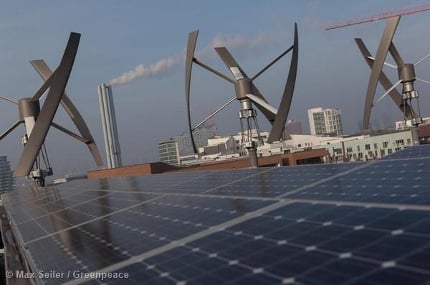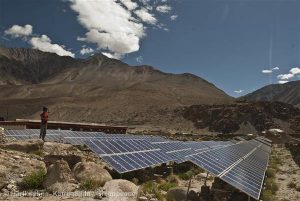India and other big emitters can slow and then reverse climate-changing gases by mid-century so the world has a good chance of avoiding the worst of climate change, said a new report published Thursday by a network of research organisations.
The study said it is still possible for the world’s biggest emitters to achieve deep and long-lasting cuts in greenhouse gas (GHG) emissions by pricing out fossil fuels such as coal and oil, and transforming how countries use energy in power generation, buildings, transport, heavy industry and manufacturing.
“This work shows clearly that 2C is still within reach if countries show some resolve and cooperate in building a low-carbon global economy,” said Jim Williams, director of the Deep Decarbonisation Pathways Project (DDPP).
The DDPP, which began in 2013, includes prominent scientists and experts from more than 40 research institutions around the world, is organised by the Sustainable Development Solutions Network (SDSN), an initiative of Columbia University’s Earth Institute for the UN, and the Institute for Sustainable Development and International Relations (IDDRI), a non-profit policy research institute based in Paris.
A decisive shift from fossil fuels in both fully-industrialised and developing countries is viewed as essential in the coming decades if the world is slow emissions in line with recommendations from the UN scientific panel that a rise in average global temperatures needs to be restricted to 2C.
This threshold, which only gives the world a fighting chance of avoiding runaway climate change, would require rich countries to slash their GHG emissions by at least 80%, while China and India would need to slow their emissions drastically from ‘business-as-usual’ by mid-century.
Longer-term decarbonisation is likely to depend in part on the outcome of the UN climate summit in Paris in December, where countries are under pressure to agree a rapid scaling up of existing pledges on cutting carbon.
Offers made so far from governments fall around 40% short of what is needed to avert catastrophic climate change, while many developing countries are resisting moves that would compel them to ratchet up carbon cuts in future decades.
“If countries pursue energy efficiency, low-carbon electricity and fuel switching, then the world can limit global warming to no more than 2C using technologies that are already commercial or expected to be within the needed timeframe,” said Jeffrey Sachs, director of the Sustainable Development Solutions Network (SDSN).
Blueprint for India
India can make big cuts in CO2 through taking actions in other areas than just climate policy, such as curbing coal use and implementing tougher emissions standards for coal-fired power stations to improve the country’s desperately-poor air quality. Promotion of renewable technologies, a push for electric vehicles, and redesigning cities to help cut down on long travel times, would also deliver clear benefits in cutting levels of carbon, the report said.
“Finding ways to achieve a low-carbon economy and prosperity at the same time matters to every country, and each country is best placed to find its own way to reach these goals,” said Teresa Ribera, a director of IDDRI.
The Indian Institute of Management, Ahmedabad; the Faculty of Planning at CEPT University, Ahmedabad; and the UN Environment Programme’s Risoe Centre at Denmark contributed to the India country report for DDPP.








